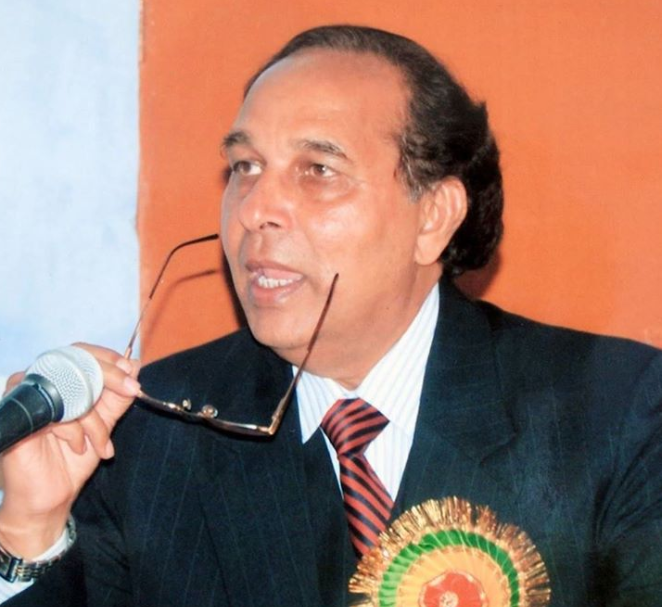Opening the RSS to the world-IV: The Golwalkar touch
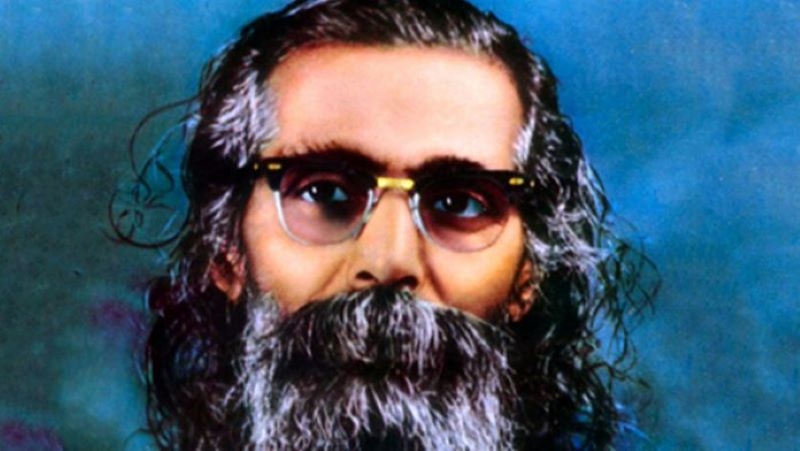 M. S. Golwalkar alias Sri Guruji
M. S. Golwalkar alias Sri Guruji
World War II started and Swayamsevaks participated in the ‘Quit India’ movement led by Gandhiji. The dark clouds of communalism were hovering over India. India wanted independence but the partition was the heavy price. M. S. Golwalkar alias ‘Guruji’, was Sarsanghchalak at that time.
He expanded Sangh's work to West Punjab & Lahore. The RSS became the defender of Hindu society during this dark phase of the hollow caste and ethnic cleaning of India. In Gurujis time, the ban on Sangh after the murder of Gandhiji was a political conspiracy. A section of politicians tried to link RSS with Gandhiji’s murder.
The initial RSS prayer was deeply influenced by the work of Samarth Ramdas. The main working departments of the RSS are Sharirik Vibhag, Buddhik Vibhag, Pracharak Vibhag, Prachar Vibhag, Sampark Vibhag, Vyavastha Vibhag, etc. The Sangh training camps are an ecosystem of integration. Technology is used in Sangh training camps. From Shakha to all India level, social works for society are analyzed.
The Role of ABVP: The working of ABVP is systematized by Prof. Yashwant Rao Kelkar. At the meeting of RSS held in 2018, the major discussion was on how to improve the area adjoining the Shakha sites. The biggest democratic movement for civil liberties was undertaken by the Sangh.
Soon after the proclamation of the Emergency, Mrs. Gandhi pronounced her intent to destroy the RSS. She declared the RSS as the root cause of the internal disturbance. Resultantly the Indira Government banned the RSS in 1975.
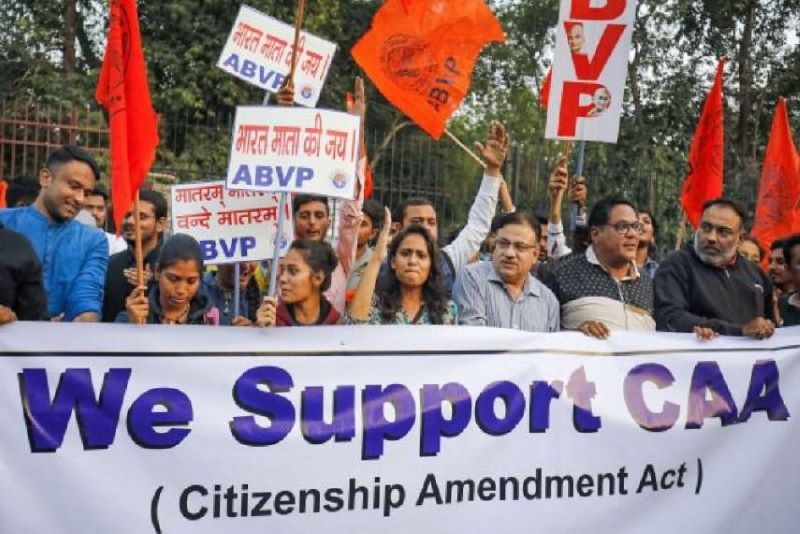
The RSS uniform (Ganavesh) was modified as khaki shorts have given way to trousers. The uniform is not mandatory, only on a festive occasion, the uniform is worn. One can attain Shakha wearing everyday clothes. In terms of timings, flexibility and local convenience are important. Early morning shakha’s at 5 am morning, evening Shakha from 6 p.m. For students, shakhas are assigned according to their time tables. Schedules are flexible. On festive occasion’s women participation as a guest are allowed for the show of physical drills and parade.
The Rashtra Sevika Samiti: Almost fifty thousand people per month are joining RSS movement. It is true that women are not part of the shakhas, however, there are many women in the RSS. Doctorji inspired the formation of the Rashtra Sevika Samiti. Many women of Sevika Samiti and Sangh Parivar were working together to ensure safety to the Hindus.
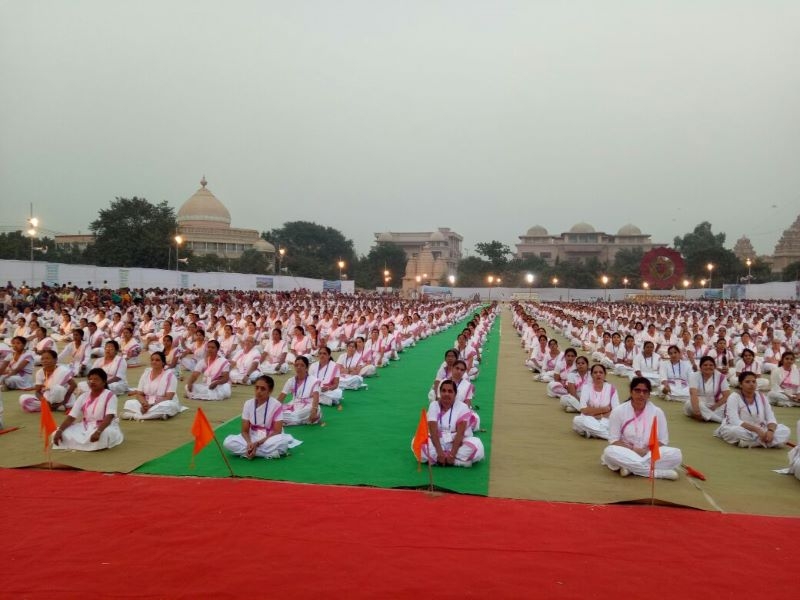
The overseas Shakhas of RSS are conducted by the Hindu Swayamsevak Sangh. There are family Shakhas of both men and women. Concept of Hindutva in a contemporary format, economic programs of the government, employment, investment, poverty elevation, and basic equality education for all are important agendas for the 21st century.
At the individual level, Sangh’s training programs for personal qualities like production work, diligence, moral imperatives, expenditure accountability, saving cost, etc. Ethics has great value and it must be put into practice. Thus, the Sangh’s mission of man-making is ‘Vyakti Nirman’ remains a forceful agenda.
Re-writing History: Our history is taught through British colonial lenses. Leading stalwarts without knowing Sanskrit tried to write history on the basis of the British Empire in India. Masses are receiving the knowledge of history in schools, colleges, and universities whereby Indian western cultures were deal with Knowledge. Savarkar used two concepts- ‘Swatantrata’ meaning freedom and ‘Swadharma’ meaning once own Dharma. Dharma is the foundation of India. Without it there is no Indian way of life.
This is the ‘Swatantrata – Swadharma’ matrix. The 1857 revolt was India’s first war of Independence. The main stalwart of 1857, Rani Lakshmi Bai, Tanya Tope, Kunwar Singh, Begum Hazrat Mahal, etc. are mere names mentioned only in a passing way.
The history of Azad Hind Fauj and the contribution of Subhash Chandra Bose are unparalleled developments in the national liberation struggles. Students know about Alexander and Napoleon, but they learn about Baij Rao Peshwa only through films.
Likewise, our village and tribal histories have been obliterated. Rani Durgawati, who fought against the army of Akbar is absent from the textbooks. Her memory survives only because ‘Gondwana’ kept her alive in their folklore.
Other tribal freedom fighters like Tilak Manjhi who took up arms against the British are lost. ‘Birsa Munda’ fought against the dual might of the church and British colonial system. He opposed conversion activities by Christian missionaries and for independence he died in the jail in Ranchi. The Ranchi Airport in Jharkhand is named after him.
The author points out on the basis of logic that the prescriptive which went into writing Indian history has been based on the sidelining of Indian heroes. They have not been giving prominence for which they deserve. Further he points out that a comprehensive history of Indian people is yet to be written.
Historical Projects: Countries based on social systems, India’s family systems, festivals, and religious fares like the Kumbh are socio-cultural inheritances. The Sangh has undertaken certain historical projects. The history of old towns is related to events and daring personalities events like The Great war of Mahabharat, Lord Buddha, Chanakya, and Shankaracharya to re-establish this history in mainstream curriculum, and RSS-inspired organization is working constantly to promote the Sanskrit language.
ABVP’S ongoing movement for Indianization of education is based on Indian experiences and it will make free it from colonial legacy. It keeps scrutiny against those who tried to show to the Indian civilization a bad light through writing distorted facts. Further the learned author appreciates ABVP works which they have undertaken to present the right perspective before the university community. This is resulting in a change in the university curriculum of some subjects.
In this sequence, ABVP launched a movement against such practices even knocking the door of the judiciary and got success. Books from NCERT sometimes give an incorrect description of National Heroes and also the incorrect interpretation of Rig Veda on castes. Also insulting statements were written about the ninth Sikh guru ‘Guru Tegh Bahadur’. In pursuance of ABVP’s nationwide agitation, Shiksha Bachao Andolan Samiti was formed.
It petitioned the court on three hundred Ramayana and NCERT for correction. ICHR and ICSSR urged by the learned author to shed light on Indian methodologies to give currency to the works of genuine historians. These organizations should re-examine history which is based on prejudices, distortions, and manipulations.
East Asian, Southeast Asian, and Silk Road countries have a rich crop of Indian culture in Architectural forms like Ramayana, Mahabharat, and Buddhism. The Ramayana is staged in many languages across the world. Indonesia has a great range of fine arts in Ramayana traditions. Countries like Nepal, Bhutan, Myanmar, Afghanistan, and Sri Lanka bear the Indian cultural heritage.
The purpose is to document the real history of India to establish valid views and to uproot speculated distortions, unfound opinions, and colonial prejudices. The Pravasi narratives came into being especially during the NDA-I government of Vajpayee. This is an evolving field of study. This has reached greater heights under Prime Minister Narendra Modi.
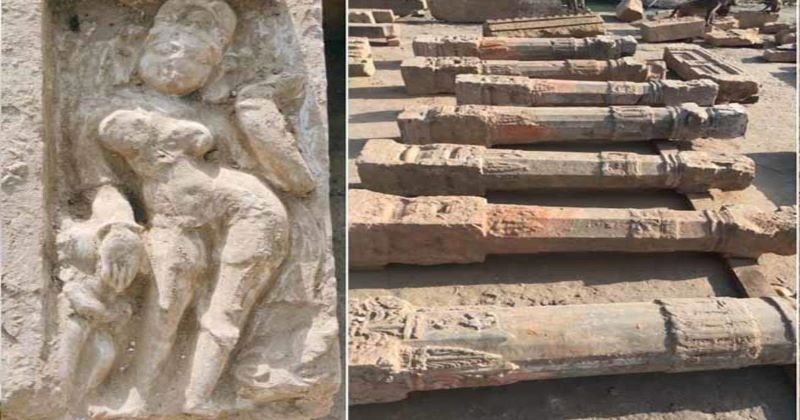
Decolonizing the Indian Mind: For the Sangh, the challenge is to de-colonize the Indian mind. Historical narratives create national consciousness as Deen Dayal Upadhyay rightly said that the nation is a pulsating entity. The author rightly points out that Indian history has to be liberated from the Marxist-Macaulay influence. India has museums nationwide; however, a lot of ground still needs to be covered.
They exist to document national history, preserve ancestral memory, advance consciousness, etc. It records the past to create a legacy for the future. New museums are still required for disseminating about India’s imminence and its contribution to the civilization development of the world.
The revolutionary element of India’s freedom struggle has been excluded in the existing museums. The Maharashtra government is constructing the Shivaji Memorial museum likewise the ‘Statue of Unity’ has been built by Gujarat Government. The author points out that there is a requirement for a pupil’s museum to execute democratic traditions. The grandeur of the Indian knowledge system has been suppressed deliberately.
When the west and many non-western countries having quest of modernity turned to India for the presumption of Holistic life. The entire world is embracing Yoga, Meditation, and Ayurveda. Prime Minister Narendra Modi expresses his keenness to construct a museum dedicated to the legacy of all former prime ministers. The revamp of existing museums is necessary.
The past has to be merited with factual accuracy. Moral lessons must be illuminated to instill self-esteem. Partition of India and the imposition of emergency have left deep wounds. The RSS tried to fulfill a historical note in protecting the public interest. In the RSS theory of knowledge and education, Sanskrit occupies a dominant place. Sangh feels important for the teaching of Sanskrit from the school level. Sanskrit is a language of culture, fine arts, drama, ancient Indian science, medicine, and philosophy, etc.
